Can A 300 Watt Solar Panel Run A Refrigerator?
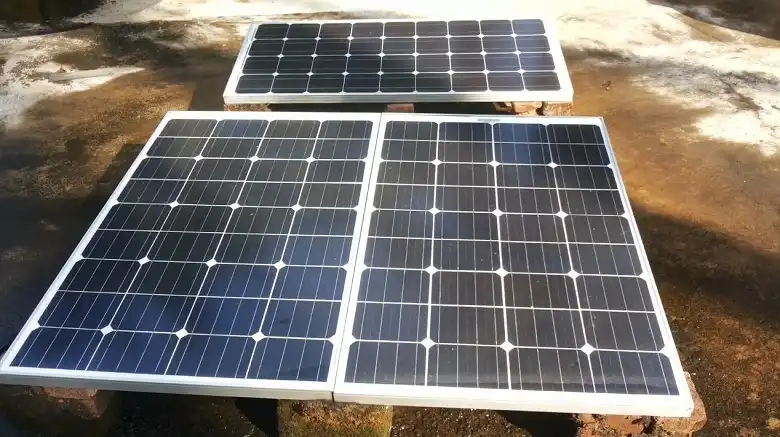
Solar power has become an increasingly popular option for powering household appliances, especially during power outages or in off-grid situations. One common question that arises is whether a 300 watt solar panel can run a refrigerator.
The answer isn’t straightforward, as it depends on various factors including the refrigerator’s power consumption, available sunlight, and the overall solar power system setup.
While a single 300 watt solar panel typically cannot directly power a standard refrigerator on its own, it can be part of a well-designed solar power system that includes battery storage and other components to successfully run a refrigerator.
This article will explore the power requirements of refrigerators, the capabilities of solar panels, and the necessary components to create a solar-powered refrigeration system.
We’ll also discuss how to properly size your system and provide tips for maximizing efficiency when using solar power for refrigeration.
Understanding Solar Panel and Refrigerator Power Requirements
Before we dive into whether a 300-watt solar panel can run a refrigerator, it’s important to understand the power requirements of both components. Let’s break this down into two key areas:
Typical Refrigerator Power Consumption
Refrigerators come in various sizes and models, each with different power needs. On average, most household refrigerators require between 300 to 800 watts of power to operate.
However, it’s crucial to note that refrigerators don’t run continuously at full power. They cycle on and off throughout the day to maintain the desired temperature.
Here’s a quick reference table for different types of refrigerators and their power requirements:
| Refrigerator Type/Size | Starting Watts | Running Watts |
| Small | 400-600 | 75-150 |
| Medium | 700-1000 | 100-250 |
| Large | 1000-1200 | 200-400 |
| RV/Compact Home | 80-120 | 40-50 |
As you can see, the starting watts (needed to kick-start the compressor) are significantly higher than the running watts. This is an important consideration when designing a solar power system.
Solar Panel Power Output
Solar panel power output is measured in watts, with a 300-watt panel being a common size for residential use. However, it’s important to understand that this rating represents the panel’s peak output under ideal conditions. In reality, several factors affect the actual power production:
- Sunlight intensity: Panels produce more power in direct, strong sunlight.
- Time of day: Output is highest during midday when the sun is directly overhead.
- Weather conditions: Clouds and shade can significantly reduce power generation.
- Panel orientation and tilt: Proper alignment towards the sun maximizes output.
- Temperature: Surprisingly, solar panels are less efficient in very hot conditions.
On average, a 300-watt solar panel might produce about 1.2-1.5 kWh of electricity per day, assuming 4-5 hours of peak sunlight. This varies greatly depending on location and conditions.
Can a 300 Watt Solar Panel Run a Refrigerator?
Connecting a 300-watt solar panel directly to a refrigerator is not feasible for several reasons:
- Inconsistent power supply: Solar panels only produce electricity when exposed to sunlight, but refrigerators need constant power.
- Power mismatch: Most refrigerators require 300-800 watts to start up and 100-400 watts to run continuously. A single 300-watt panel can’t provide this consistently.
- Voltage incompatibility: Solar panels produce DC electricity, while most refrigerators run on AC power.
- Lack of energy storage: Without batteries, there’s no way to store excess energy for use when the sun isn’t shining.
Factors Affecting Feasibility
While a single 300-watt panel isn’t sufficient on its own, it can be part of a system that powers a refrigerator. The feasibility depends on:
- Refrigerator energy efficiency: Modern, energy-efficient models require less power.
- Climate and sunlight availability: Areas with more sunny days are more suitable.
- Battery storage capacity: Larger battery banks can store more energy for nighttime use.
- Overall system size: Additional panels can increase total power generation.
- Other power demands: If the refrigerator is the only appliance, it’s more feasible than if powering an entire household.
Components Needed for a Solar-Powered Refrigerator System
While a single 300-watt panel isn’t enough, multiple panels can be used to create an adequate system. The number of panels needed depends on your specific refrigerator’s power requirements and your location’s sunlight availability.
Solar Panels
Typically, you might need 600-1000 watts of solar panel capacity to reliably run a refrigerator.
Batteries
Batteries are crucial for storing energy produced during sunny periods for use at night or on cloudy days.
Deep-cycle lead-acid or lithium-ion batteries are commonly used. The battery bank should be sized to provide at least 24 hours of power to the refrigerator. For a typical refrigerator, this might mean 2-3 kWh of usable battery capacity.
Controller
A charge controller is an essential component in a solar power system, especially when running appliances like refrigerators.
It regulates the voltage and current coming from the solar panels to the battery, preventing overcharging and extending battery life.
For a refrigerator setup, you’ll want to choose a charge controller that can handle the output of your solar panels and the charging requirements of your battery bank.
There are two main types of charge controllers:
- PWM (Pulse Width Modulation): These are more affordable but less efficient.
- MPPT (Maximum Power Point Tracking): These are more expensive but can increase charging efficiency by up to 30%.
For a system powering a refrigerator, an MPPT charge controller is often recommended due to its higher efficiency, which can be crucial when dealing with limited solar input.
Inverters
An inverter is necessary to convert the DC power stored in batteries into AC power that most refrigerators use. When choosing an inverter for your solar-powered refrigerator system, consider the following:
- Power rating: The inverter should be able to handle the starting watts of your refrigerator, which can be 3-4 times higher than the running watts.
- Pure sine wave vs. modified sine wave: Pure sine wave inverters are better for running sensitive electronics and motors, making them ideal for refrigerators.
- Efficiency: Look for inverters with high efficiency ratings to minimize power loss.
Make sure to size your inverter appropriately based on your refrigerator’s power requirements and any additional appliances you plan to run.
Sizing Your Solar System for a Refrigerator
Properly sizing your solar system is crucial for ensuring your refrigerator runs efficiently and reliably. Let’s break down the process into three key steps:
Calculating Energy Needs
To determine how much solar power you need, first calculate your refrigerator’s daily energy consumption:
- Find the refrigerator’s power rating in watts.
- Estimate the number of hours it runs per day (typically 8-12 hours).
- Multiply the wattage by the running hours to get watt-hours (Wh) per day.
For example, if your refrigerator uses 150 watts and runs for 10 hours a day: 150 watts × 10 hours = 1500 Wh or 1.5 kWh per day
Determining battery capacity
When sizing your battery capacity for a solar-powered refrigerator system, you need to consider the energy requirements of the refrigerator and how long you want to run it without solar input. Here are some key points to consider:
- Daily energy consumption: Calculate the total watt-hours your refrigerator uses per day.
- Days of autonomy: Decide how many days you want to run the refrigerator without solar charging (typically 2-3 days for most systems).
- Depth of discharge: Most batteries shouldn’t be discharged below 50% to maintain longevity.
To calculate the required battery capacity, use this formula:
Battery Capacity (Ah) = (Daily energy consumption x Days of autonomy) / (Battery voltage x Depth of discharge)
For example, if your refrigerator uses 1000Wh per day, you want 3 days of autonomy, and you’re using a 12V battery system with 50% depth of discharge:
Battery Capacity = (1000Wh x 3) / (12V x 0.5) = 500Ah
This means you’d need a 500Ah battery bank to power your refrigerator for 3 days without solar input.
Considering additional appliances
While sizing your solar system for a refrigerator, it’s important to account for any additional appliances you might want to power. This ensures your system can handle the total load without being overwhelmed. Here are some considerations:
- List all appliances: Make an inventory of all devices you plan to run on solar power.
- Calculate total energy consumption: Sum up the daily energy usage of all appliances.
- Peak power requirements: Determine the maximum simultaneous power draw from all devices.
- Expansion potential: Consider future needs and leave some room for system growth.
Remember to adjust your solar panel array size and battery capacity calculations to accommodate these additional power requirements. This may mean adding more solar panels or increasing your battery bank size to ensure all your appliances can run efficiently on solar power.
Tips for Maximizing Solar-Powered Refrigerator Efficiency
When running a refrigerator on solar power, it’s crucial to maximize efficiency to ensure optimal performance and minimize energy consumption. Here are some key tips to help you get the most out of your solar-powered refrigerator system:
Proper insulation and maintenance
Check and replace door seals: Ensure the refrigerator’s door seals are in good condition and replace them if they’re worn out. This prevents cold air from escaping and warm air from entering, reducing the workload on your solar system.
Clean condenser coils: Regularly clean the condenser coils at the back or bottom of the refrigerator. Dust and debris can accumulate, making the refrigerator work harder and consume more energy.
Optimize temperature settings: Set your refrigerator to the recommended temperature (usually around 37°F or 3°C) to maintain food freshness without wasting energy on unnecessarily.
Smart Usage Habits
To maximize the efficiency of your solar-powered refrigerator system, adopting smart usage habits is crucial. Here are some practical tips:
Minimize door openings: Every time you open the refrigerator door, cold air escapes and warm air enters, making the compressor work harder. Try to plan your refrigerator visits and get everything you need in one go.
Cool food before refrigerating: Placing hot or warm food directly into the refrigerator forces it to work harder. Allow cooked food to cool to room temperature before storing it.
Organize contents efficiently: Keep frequently used items at the front to reduce search time with the door open. Use clear containers to easily see what’s inside without prolonged browsing.
Defrost regularly: For manual defrost models, don’t let frost build up more than 1/4 inch. Excessive frost makes the refrigerator less efficient.
Final Words
As we’ve explored throughout this article, the question of whether a 300-watt solar panel can run a refrigerator is not as simple as a yes or no answer.
While a single 300-watt panel alone is generally not sufficient to power a standard refrigerator directly, it can be a crucial component in a properly designed solar power system capable of running a refrigerator.

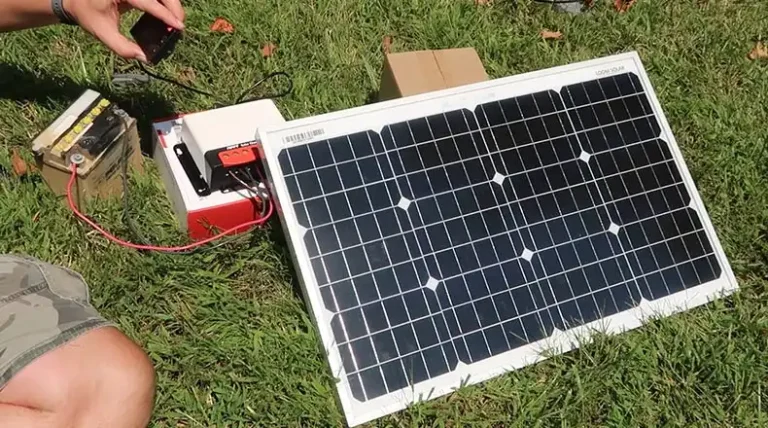
![[Explained] What Can I Do With A 1.5 Watt Solar Panel?](https://www.itekenergy.com/wp-content/uploads/2023/08/what-can-I-do-with-a-1-5-watt-solar-panel-768x428.webp)
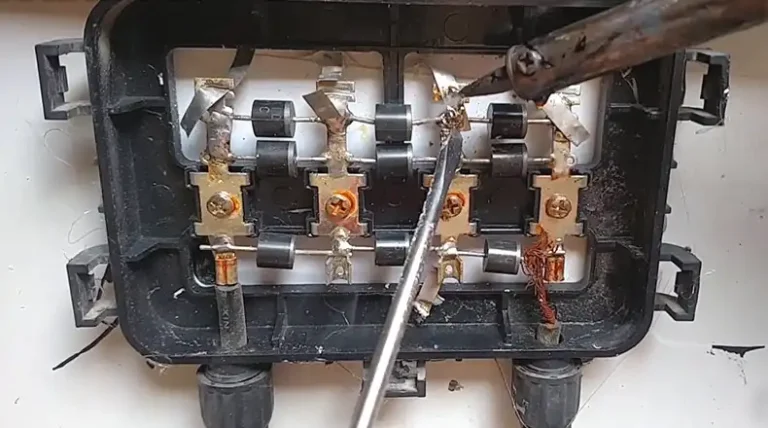
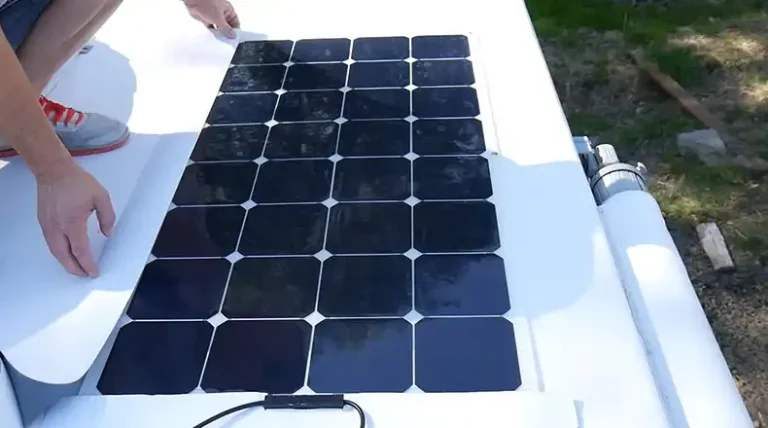
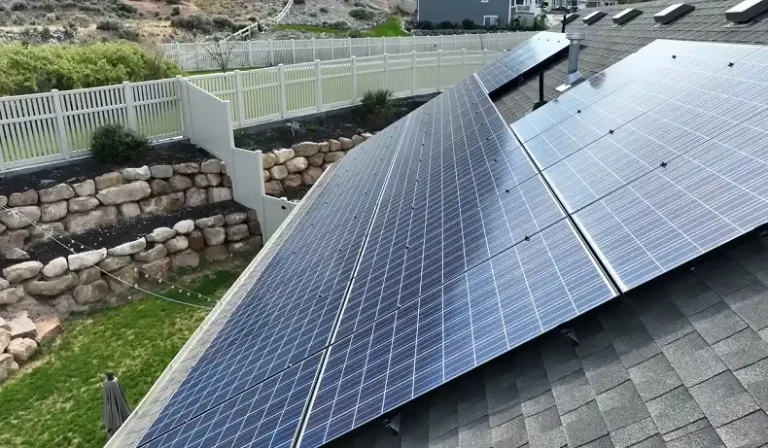
![Best Solar Companies in San Jose | [2024 Guide]](https://www.itekenergy.com/wp-content/uploads/2024/03/Best-Solar-Companies-in-San-Jose-768x428.webp)